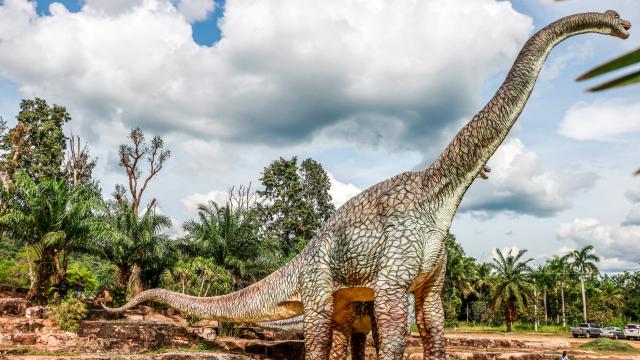It’s pretty great talking to a kid midway through their dinosaur phase. They almost definitely know more dino facts and stats than you do, but they also have a lot of unanswerable questions about what happened to the creatures before they went extinct. It makes sense: it’s kind of hard to imagine something of that size running around.
But exactly how big were they? Thanks to a new research project, we now have a much better idea — though that, in turn, brings up the age-old question: How one would weigh a long-extinct dinosaur? Here’s what we know.
The basics of dinosaur weighing
Though you may have never specifically thought about how much dinosaurs weighed, this is something that paleobiologists have been trying to figure out for more than a century. So it was kind of a big deal when researchers from the University of New England and the Royal Ontario Museum published their findings on this in the journal Biological Reviews.
And as much as we’d love to report that their methodology involved time travel and a giant scale, that’s not the case. In fact, no scale — or actual weighing — was involved at all. Instead, the researchers reviewed dinosaur body mass estimation techniques used since 1905, and found that despite taking different approaches, many of these methods yield strikingly similar results. This means that our current concept of the sizes of dinosaurs is probably relatively accurate.
If you’re wondering about what these techniques actually involved, here’s more information from the Royal Ontario Museum:
Although a range of different methods to estimating body mass have been tried over the years, they all come down to two fundamental approaches. Scientists have either measured and scaled bones in living animals, such as the circumference of the arm (humerus) and leg (femur) bones, and compared them to dinosaurs; or they have calculated the volume of three-dimensional reconstructions that approximate what the animal may have looked like in real life. Debate over which method is ‘better’ has raged in the literature.
The researchers found that once scaling and reconstruction methods are compared en masse, most estimates agree. Apparent differences are the exception, not the rule.
Weight is just a number, so why does this matter?
In short, because it gives us a clearer picture of both what the dinosaurs looked like, and how they behaved. “Body size, in particular body mass, determines almost at all aspects of an animal’s life, including their diet, reproduction, and locomotion,” Dr. Nicolás Campione, a member of the University of New England’s Palaeoscience Research Centre said in a statement. “If we know that we have a good estimate of a dinosaur’s body mass, then we have a firm foundation from which to study and understand their life retrospectively.”
Having said that, the researchers behind this study stress that like humans, each dinosaur was unique in size, shape and mass, so it’s not possible to pinpoint a precise weight for each type of dinosaur. “It is only through the combined use of these methods and through understanding their limits and uncertainties,” Campione explains, “that we can begin to reveal the lives of these, and other, long-extinct animals.”

Leave a Reply
You must be logged in to post a comment.